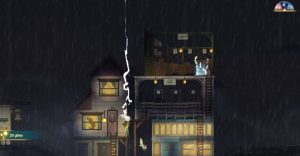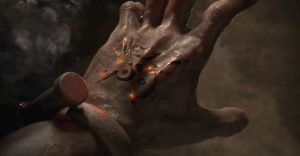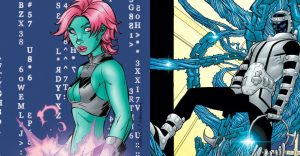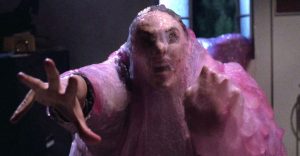Doom Patrol: The Sisterhood of Dada Piffle Paffle Message: Image Explained

Warning: Contains spoilers for Doom Patrol season 3 episode 6.
At the end of Doom Patrol season 3, episode 6 “1917 Patrol,” Laura De Mille is faced with a message from The Sisterhood of Dada in fire reading “piffle paffle” around a strange symbol. While Doom Patrol is known for its bizarre and absurdist plot lines and characters, this scene seems particularly strange. While it might mean more to Laura De Mille, The Sisterhood of Dada’s message probably left a lot of viewers wondering what “piffle paffle” and the strange image mean.
While the phrase was teased in the Doom Patrol season 3 trailer, “piffle paffle” first appears in the show in season 3, episode 6 “1917 Patrol.” The Sisterhood of Dada say it to Rita Farr (April Bowlby) and give a vague explanation of their usage of the phrase and it then reappears at the end of the episode in 2021 when Laura De Mille (Michelle Gomez) sees it in flames. The image in the center has also been seen earlier in the episode on the napkins that are blown around the Bureau of Normalcy cafeteria, and it is seen in Doom Patrol season 3, episode 5 “Dada Patrol,” in graffiti around the word alongside the phrase “eternal flagellation,” which appears to be the name for The Sisterhood of Dada’s endgame.
While Doom Patrol is using the phrase as a herald for the coming of The Sisterhood of Dada, “piffle paffle” has a deeper meaning. “Piffle,” by itself, originated as a word in the 1800s as a derisive way to suggest that something being said is unimportant, trivial, and to be dismissed. “Paffle” is simply tacked on to “Piffle” to form a nonsense phrase that has a rhyme to it and echoes phrases with similar meanings such as “pish posh.” The Sisterhood of Dada uses it as part of their embrace of Dadaism and the ideology that existence is fundamentally meaningless and absurd. They use it to discount anything that they perceive as negative and out of their power to control, such as their standing as metas that are seen as “less than” by the Bureau of Normalcy that they work for.

The image that recurs throughout Doom Patrol season 3 and is linked to The Sisterhood of Dada has similar ties to their Dadaist ideas. The image does not appear to have been drawn directly from the comics, and while it serves as a logo for The Sisterhood of Dada, the original Brotherhood of Dada in the comics had no logo. While much of the artwork of the Dadaists was comprised of collages and assemblages of other items and works and that is not what is seen in this image, it still embodies some of the essence of the art movement in its non-literal interpretation of a human face that is missing some part of itself and appears to have either wings or horns. The contorted face could be intended to represent part or all of the members of The Sisterhood of Dada, an homage to Mr. Nobody whose new visage is an incomplete face (although this didn’t happen until after 1917), or could even be a rendering of the horned devil that another version of is seen drawn in Darren Jones’ notebook.
Ultimately, the message and image from The Sisterhood of Dada in Doom Patrol cement the group’s roots in Dadaist thought. The Dada movement was a reaction to World War 1 and the idea that after realizing the carnage, death, and destruction they were possible, nothing that humanity did actually had any real meaning or purpose. This origin of Dada seems to be referenced by Shelley Byron (Wynn Everett) in season 3, episode 5, when she says that she was the Bureau’s weapon and, given her powers connection to fogs and gas clouds, could imply that in this timeline part of the gas warfare of World War 1 was Shelley Byron (AKA The Fog) herself. Instead of trying to make sense of the world as it is, Dada embraces the absurdity of existence and revels in the nonsensical, which is why The Sisterhood of Dada reject so much of the world with the phrase “piffle paffle” and plan to unmake a large chunk of existence through the eternal flagellation.
Doom Patrol releases new episodes Thursdays on HBO Max.
About The Author


















